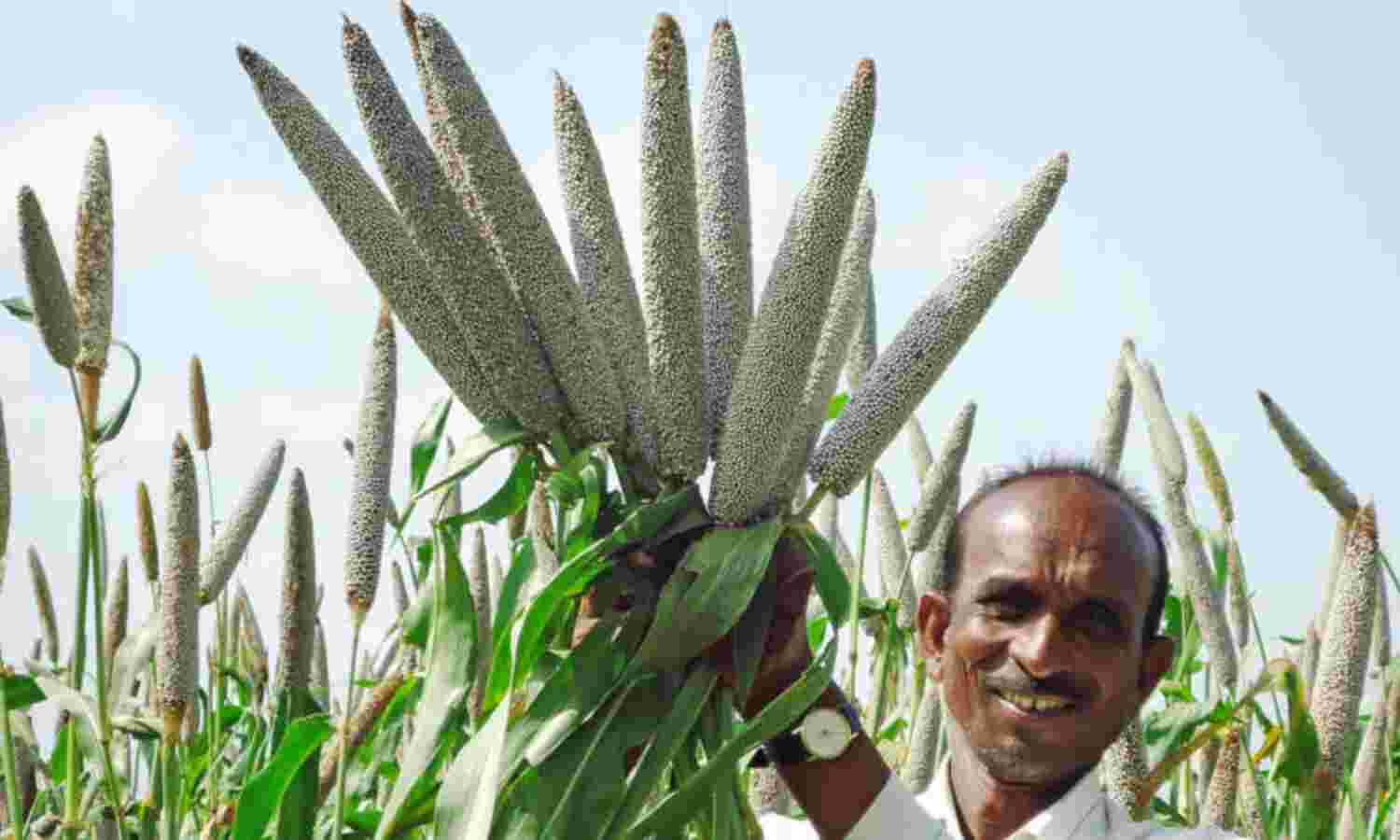Iron-Fortified Pearl Millet Fights Anaemia, Improves Learning In Teens

New Delhi: Biofortified bajra (pearl millet) introduced into the diet of Indian adolescents led to reduced iron deficiency and improved learning skills and mental ability, a new study found.
Biofortification is a process by which the nutritional value of a crop is improved through conventional plant breeding or bio-technology. This is different from fortification, a post-harvest process adopted by the food industry, mostly for salt, atta (wheat flour) and milk.
A randomised double blind trial--where both participants and researchers are unaware which group is being given the intervention--was conducted in Maharashtra for six months among 140 adolescents aged between 12 and 16. One set consumed the iron-fortified millet while the other consumed conventional pearl millet twice daily as bhakri (a local flatbread) or shev (a savory snack). Computer-based tasks were administered before and after six months of the experiment to measure cognitive skills.
Those who consumed fortified millet showed improved learning and mental abilities related to perception, attention, and memory, found the study published in Journal of Nutrition in July 2018. This group also showed a 50% reduction in reaction time to certain tasks.
“If we can improve adolescents’ performance in school by boosting their iron intake we may also have longer term impacts in terms of their ability to secure a good job, or be admitted to a college programme,” said the press statement issued by Samuel Scott, the lead author of the study and an associate research fellow at the International Food Policy Research Institute (IFPRI).
A previous study involving 260 Indian adolescents had shown that biofortified bajra resolves iron deficiency 1.6 times faster than conventional bajra.
Iron deficiency is the most common cause of anaemia which limits brain development and learning capacity, hampering the potential of individuals and societies for generations.
In India, 54% of women and 29% of men in the 15-19 year age bracket are anaemic, according to the latest National Family Health Survey (NFHS, 2015-16). This is the highest figure among all age groups from 15 to 49 years. The levels of anaemia have not changed significantly--there was just a little over one percentage point decrease in the numbers for women and men in the 15-19 age bracket in a decade to 2015-16.
Iron deficiency anaemia remained the top cause of disability for more than a decade, IndiaSpend reported in October 2016. India lost upto 0.9% of its gross domestic product--over $22 billion or three times the health budget for 2017-18--to productivity losses caused by anaemia in 2016, we reported.
Improved sanitation facilities and delayed pregnancy in India could reduce the rates of anaemia in pregnant women faster, IndiaSpend reported in June 2018.
Rapid growth, menstruation, poor diet: Why teens are prone to anaemia
This is the second study that demonstrates the role of iron biofortification in functional cognitive improvement and could impact the lives of women and teens in various spheres including school and work.
The first study on 150 Rwandan female college students conducted by a group of researchers showed improvement in their cognitive and memory skills after the inclusion of biofortified beans in two meals for four-and-a-half months.
Adolescents are particularly vulnerable to iron deficiency because of periods of rapid growth, the onset of menstruation among girls, and poor dietary habits. Addressing adolescent iron deficiency is crucial to ending the intergenerational cycle of malnutrition, said the paper.
In India, 26.8% of women marry by 18 years of age and soon thereafter bear children.
“Adolescent girls/women experience a rise in iron requirements due to sexual maturation (growth and menses),” said Erick Boy, co-author of the study and head of nutrition at Harvest Plus, a global alliance to improve mineral and vitamin-rich crops by biofortification. “Many young women reach pregnancy with low or no iron stores and therefore, high risk of adverse conditions for their health and that of their offspring.”
Improved iron status among girls can lead to better maternal, child health
Anaemia causes 20% of maternal deaths in India and was the associate cause in 50% maternal deaths, IndiaSpend reported in October 2016. It causes low birth weight among babies, putting them at risk for lifelong issues involving cognitive development and physical growth. Anaemic children go on to earn 2.5% less as adults than their healthier peers.
“Teenage girls are soon entering child bearing years and we know iron status carries over from one generation to the next,” said co-author Laura E Murray-Kolb, who is associate professor at the Pennsylvania State University. “Therefore, if we can improve a girl’s iron status in adolescence, it can allow her to enter pregnancy with better iron stores, and that benefit will be conferred in a positive way to the next generation.”
Supplements, fortified foods have limited reach
Conventional supplementation has been a part of India’s strategy to fight anaemia but it has met with limited success--only 26.1% of children between six and 24 months of age targeted for iron supplementation have actually received it, according to NFHS 2015-16.
For resource-poor families or rural communities that mostly consume staple crops such as pearl millet, nutrient-enriched versions of these crops present a cost-effective, sustainable strategy for improved nutrition, noted the study.
Biofortification complements--and has advantages over--existing micronutrient deficiency interventions such as supplementation and industrial fortification, according to a 2017 review of data from 2003 to 2016. They reach underserved rural populations and are a long-term and cost effective strategy. Once crops are biofortified, they do not need much further investment. Also, every $1 invested in bio-fortification gives benefits worth $17, said the review.
“Fortification in free-market conditions reaches only population segments that can afford processed foods,” said Boy. “Biofortification reaches small landholders who produce and consume (or sell the surplus) these crops. It also benefits the landless who buy from small producers.”
(Yadavar is a principal correspondent with IndiaSpend.)
We welcome feedback. Please write to respond@indiaspend.org. We reserve the right to edit responses for language and grammar.


